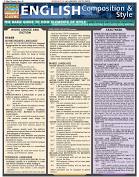Put the Main Blog Idea on the End Cap
“Supermarkets have gone to great lengths to make you think that ‘impulse buy’ was really an impulse,” observe the authors of The Big Book of Big Secrets, explaining that the ‘end caps”, shelves at the outer end of each aisle, are “the equivalent of beachfront property.”. Although supermarkets use other tactics to promote their wares, including mood lighting and even aromas, studies have shown that placing items on end caps can boost sales by as much as a third, not because those items re on sale, but because end cap placement conveys the impression that those items are special. A second grocery store tactic is based on studies showing that the average grocery shopper is “lazy”, tending to choose things placed at eye level. (Some marketers put the most expensive items there – on purpose, the authors note.) When it comes to blogging for business, I teach at Say It For You, the “end caps” of blog marketing are titles and closing lines.
Let’s talk first about titles. There are two basic reasons titles matter so much in blogs:
- search – key words and phrases, especially when used in blog post titles, help search engines make the match between online searchers’ needs and what your business or professional practice has to offer.
- reader engagement – after you’ve been “found”, you’ve still gotta “get read”, I remind our business owner and professional practitioner clients.
While “pow opening lines” can come in different flavors, in helping high school and college students write effective essays, I often suggest they introduce their readers to both their topic and their thesis, doing both those things on the “end cap” where they’ll get the most attention. That way, I teach each the student writer, your readers will understand not only what issue will be under discussion, but “which side” you’re going to take.
In business blog writing, for the opening “end cap”, you may choose to present a question, a problem, a startling statistic, or a gutsy, challenging statement. Later, on the “back end” of your blog “aisle”, your “pow” closing statement ties back to the opener, bringing your post full circle.
Main blog marketing ideas belong on the end caps!





Follow us online!